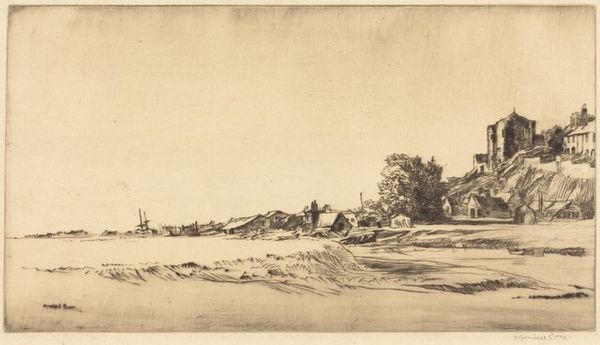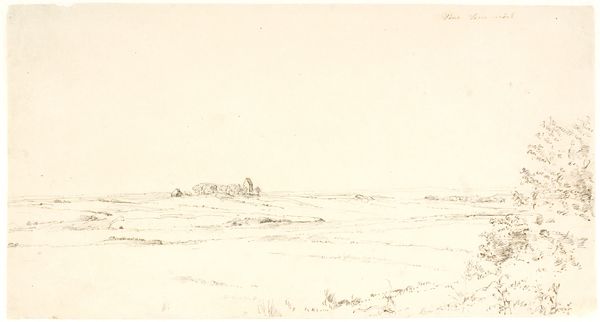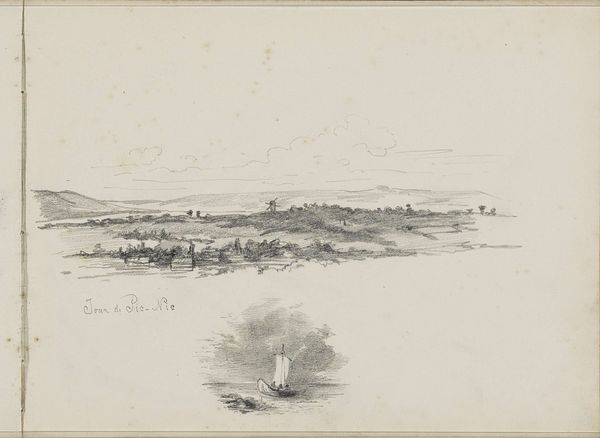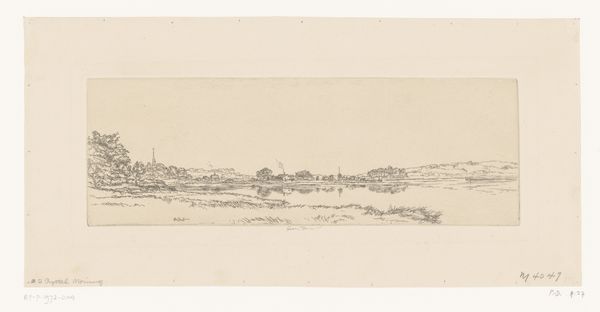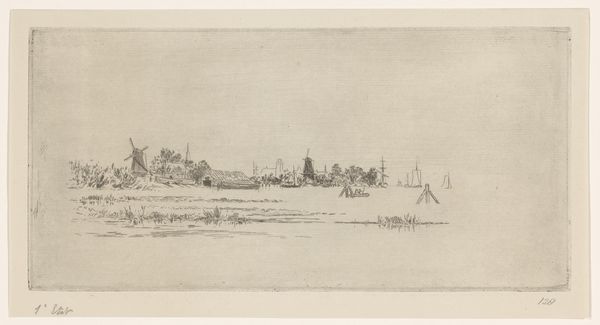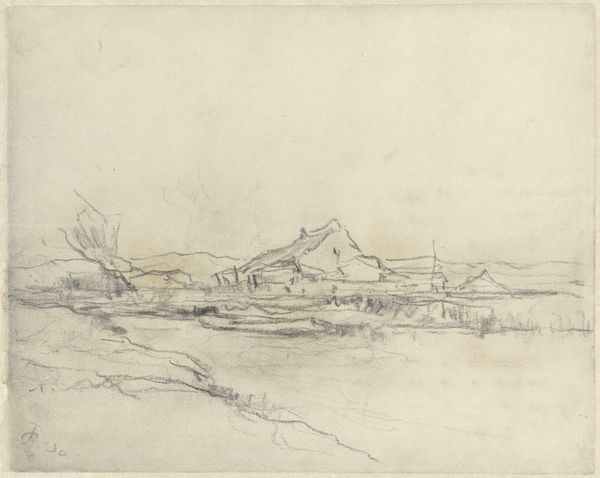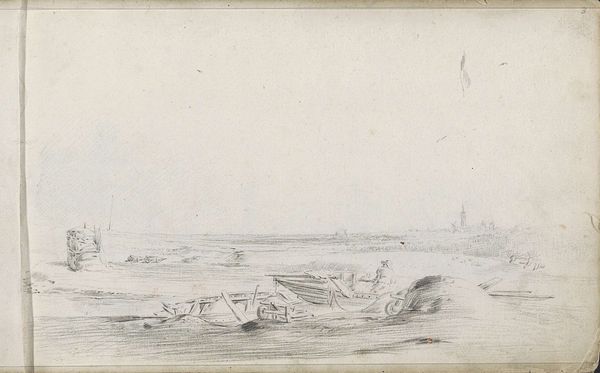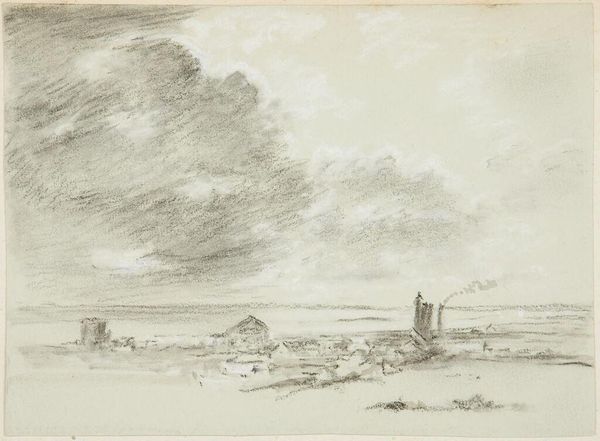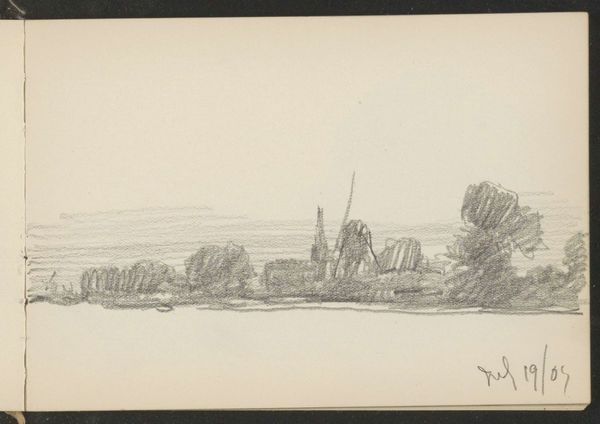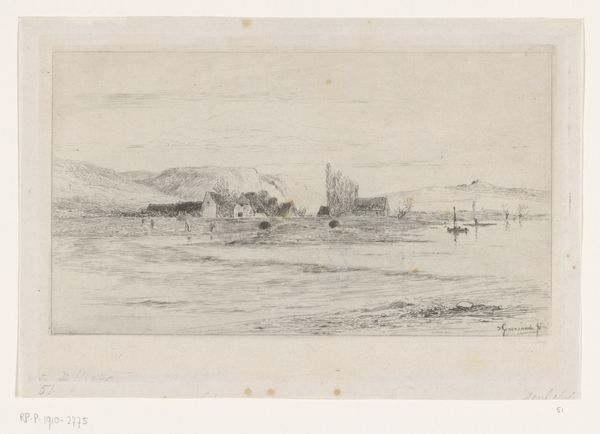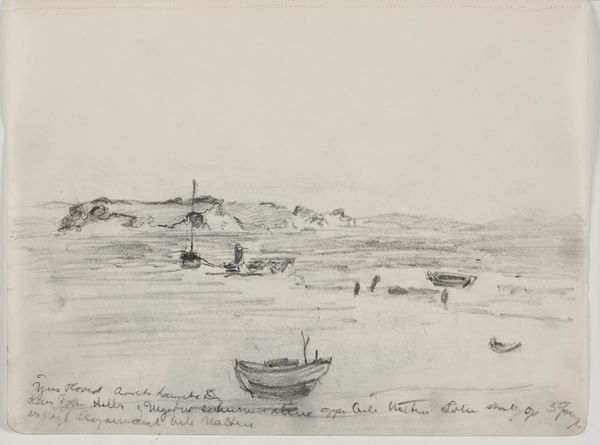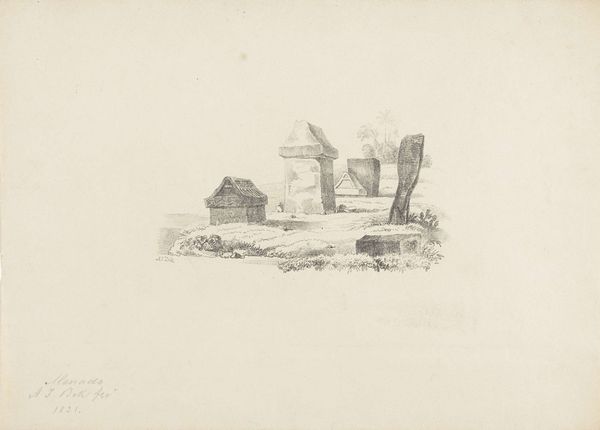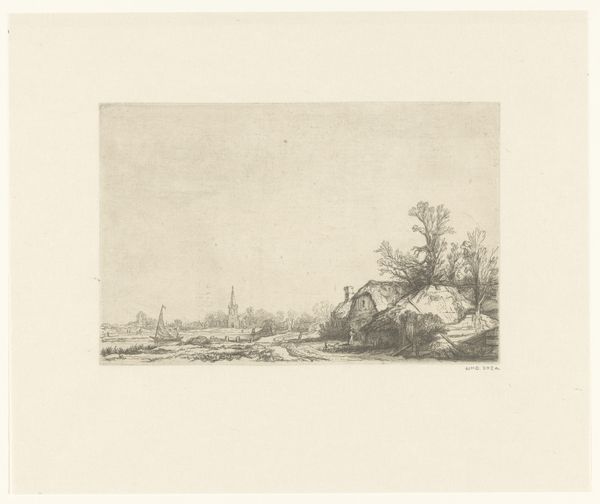
Woestijnlandschap met rustende kameel bij een bedoeïenentent 1830 - 1860
0:00
0:00
drawing, pencil
#
drawing
#
pencil sketch
#
landscape
#
romanticism
#
pen-ink sketch
#
pencil
#
academic-art
#
realism
Copyright: Rijks Museum: Open Domain
Curator: This drawing, made sometime between 1830 and 1860, is called "Desert Landscape with Resting Camel by a Bedouin Tent" and is attributed to Albertus van Beest. Editor: Spare. Almost ethereal. The monochrome palette evokes a sense of bleached vastness. What’s striking to me is the interplay of the defined form of the camel against the implied, almost ghostly, presence of the Bedouin tent. Curator: Van Beest renders the scene primarily with pencil, giving the artwork an immediacy, almost as if we are seeing his first impressions recorded directly onto the paper. He skillfully employs hatching to bring depth to the foreground, creating texture in what would otherwise be a completely flat landscape. The Romantic sensibility toward nature is palpable. Editor: That tent interests me – the way its barely-there construction speaks volumes about nomadic life, the resourcefulness demanded by such environments. And look closely, the materiality of the tent is so different from the camel, but created from the same method of production, pencil on paper. Curator: Absolutely. The camel becomes a poignant symbol in contrast. Burdened by survival and a stark rendering. It invokes, in my opinion, the well-worn themes that are central to Romanticism. Specifically, an awareness of time's passage. Editor: The romantic ideal is obvious, I’m thinking also of its consumption; images like these played a role in the construction of the "Orient" for a Western audience. The materiality, then, extends beyond just paper and pencil; it encompasses the whole circuit of how this image traveled, who viewed it, and what they understood from it. Curator: I see it. What struck me most about it now is the symbolic value of the resting camel: stillness, even in hardship, or acceptance. This makes the sketch something far deeper, for me anyway, than just a record of a journey to distant lands. Editor: And, for me, considering how this humble sketch carries this story of cultural encounter, mediated through pencils and paper but also shaped by trade routes, travel, and then consumption back in the Netherlands – the real journey of this image only begins after it left Van Beest’s hand.
Comments
No comments
Be the first to comment and join the conversation on the ultimate creative platform.

